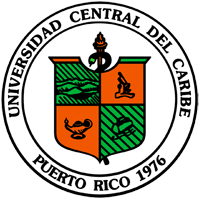A joint meeting between Hermansky-Pudlak Syndrome (HPS) Network and the American Thoracic Society (ATS) was celebrated Saturday, April 21st at the Sheraton Hotel in San Juan, Puerto Rico. During the meeting, several world and local experts were adressing the prognosis of HPS patients and tips to enhance the quality of life of Albino patients. Simultaneously, a session for teens and parents with their kids was directed towards the management of their condition from early ages, which is critical to correct some visual problems. A lunch with a board of experts in HPS from NY, Texas, Mayaguez, MSC-UPR and UCC among others, outlined possibilities of action for research. During the afternoon, a general session was held to motivate and educate the society to prevent their discrimination and promote insertion into school at different levels and into the workforce.
 To date, the Albino population in Puerto Rico has been estimated at ~1000. The high prevalence of this condition represents a major disparity compared to US and the rest of the world. The map describes the origin of two genetic populations in PR with inherited HPS. The actual distribution of the population has changed by natural migration to the metropolitan area and to the US mainland.
To date, the Albino population in Puerto Rico has been estimated at ~1000. The high prevalence of this condition represents a major disparity compared to US and the rest of the world. The map describes the origin of two genetic populations in PR with inherited HPS. The actual distribution of the population has changed by natural migration to the metropolitan area and to the US mainland.
 In the picture, a few of more than 200 albinos attending the meeting. Dr. Natalio Izquierdo, the tallest man in the picture, is one of the most experienced ophthalmologist regarding the diagnosis and treatment of visual symptoms associated to this condition. Dr. Jorquera and his Ph.D. candidate Ismael Santiago -back and center of the picture- have developed a Drosophila model system that gathers most of the pathological conditions affecting the HPS population including retinal Albinism, impaired visual function, Immune deficiency among other symptoms.
In the picture, a few of more than 200 albinos attending the meeting. Dr. Natalio Izquierdo, the tallest man in the picture, is one of the most experienced ophthalmologist regarding the diagnosis and treatment of visual symptoms associated to this condition. Dr. Jorquera and his Ph.D. candidate Ismael Santiago -back and center of the picture- have developed a Drosophila model system that gathers most of the pathological conditions affecting the HPS population including retinal Albinism, impaired visual function, Immune deficiency among other symptoms.
 The model system in the picture -note the white color of the eye- will open several possibilities to extend our understanding of the genetic inheritance of this condition. It would also help in generating new treatments from early stages of life. Dr. Jorquera indeed anticipates that reduced stress in life and a balanced nutrition could improve their quality of life by reducing the use of the Lysosome, a deficient intracellular organelle associated to this condition. Congratulation for this joint effort!
The model system in the picture -note the white color of the eye- will open several possibilities to extend our understanding of the genetic inheritance of this condition. It would also help in generating new treatments from early stages of life. Dr. Jorquera indeed anticipates that reduced stress in life and a balanced nutrition could improve their quality of life by reducing the use of the Lysosome, a deficient intracellular organelle associated to this condition. Congratulation for this joint effort!
For more information please visit:

